Indoor Rowing for Athletes: Cross-Training Benefits for Runners, Cyclists, Swimmers, and Triathletes
 Karen Parnell
January 28, 2025
Karen Parnell
January 28, 2025
Indoor Rowing for Athletes: Cross-Training Benefits for Runners, Cyclists, Swimmers, and Triathletes
Indoor rowing, a full-body workout using a rowing machine, has become a popular form of exercise for athletes looking to build strength, endurance, and improve overall fitness. Whether you're training for a triathlon, preparing for a race, or just looking for a way to improve your cardiovascular health, indoor rowing is an excellent choice that offers numerous benefits.
Rowing can be done in a gym or at home, making it a versatile addition to any training program. It uses a unique combination of cardiovascular effort and strength training, engaging multiple muscle groups simultaneously. Rowing provides a great alternative to other forms of cardio, like running or cycling, offering a low-impact, full-body workout that emphasizes both aerobic and anaerobic conditioning.
Let's take a look at how indoor rowing benefits different athletes, such as runners, cyclists, and swimmers, and how it fits into their training routines.
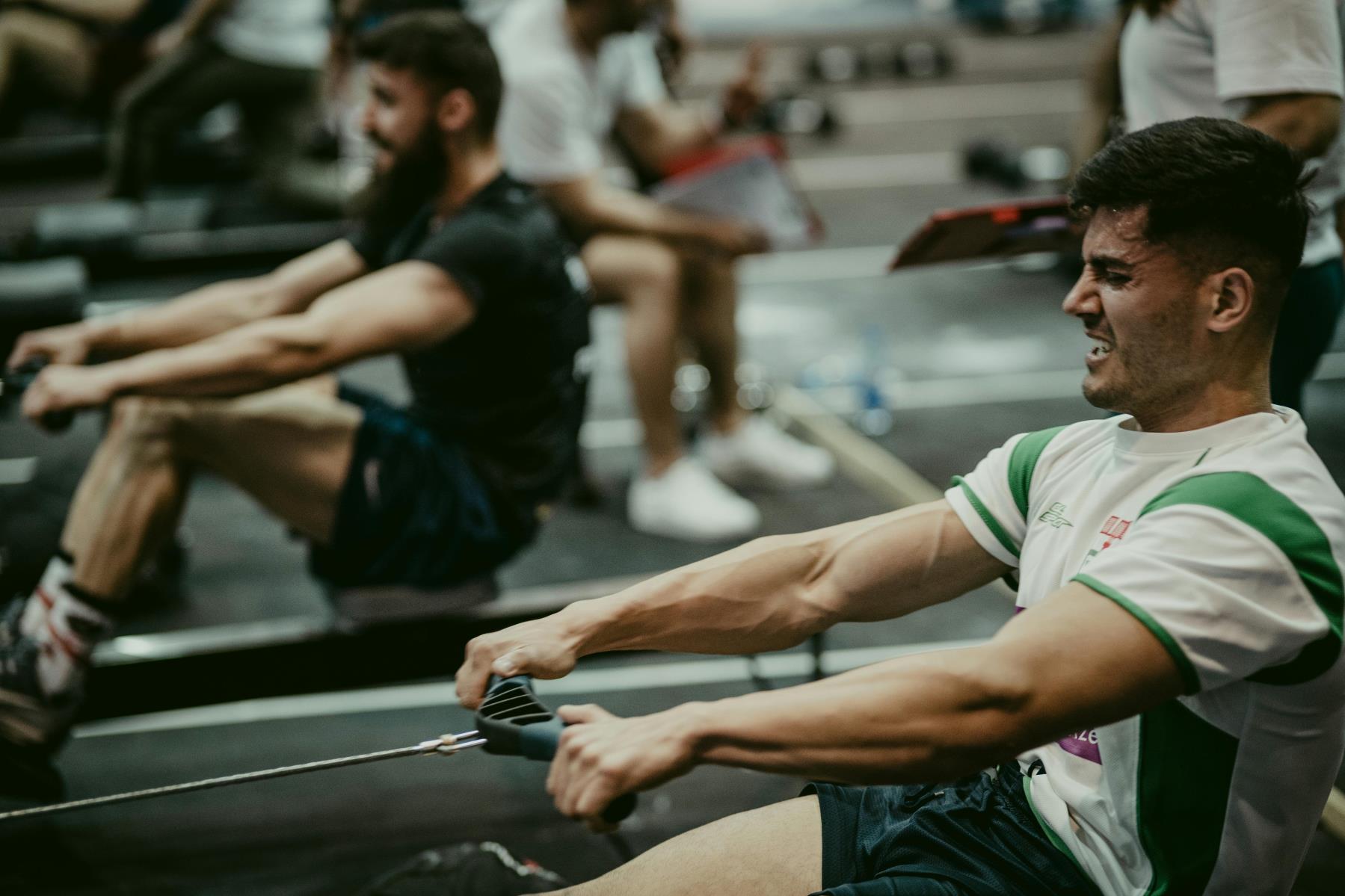
Photo by Ardit Mbrati
Why Swimmers Should Love Rowing
Indoor rowing is an excellent cross-training option for swimmers because it mimics the action of swimming, especially the pulling motion of the arms. Rowing builds the upper body strength and endurance necessary for powerful strokes in the water.
- Muscles Targeted: The primary muscles used in rowing include the back (lats), shoulders, arms (biceps, triceps), and core. While the legs also play a role, the upper body engagement in rowing is particularly beneficial for swimmers.
- Why It’s Effective: Swimming requires a lot of upper body strength, and rowing strengthens the same muscles used in swimming strokes like freestyle and butterfly. It also helps with breathing control and cardiovascular endurance, crucial for longer swim sets.
Suggested Rowing Workout for Swimmers:
- Warm-up: 5-10 minutes of easy rowing at a low intensity.
- Main Set: 4 x 500 meters focusing on strong pulls, with 1-minute rest between sets.
- Cool Down: 5 minutes of easy rowing.
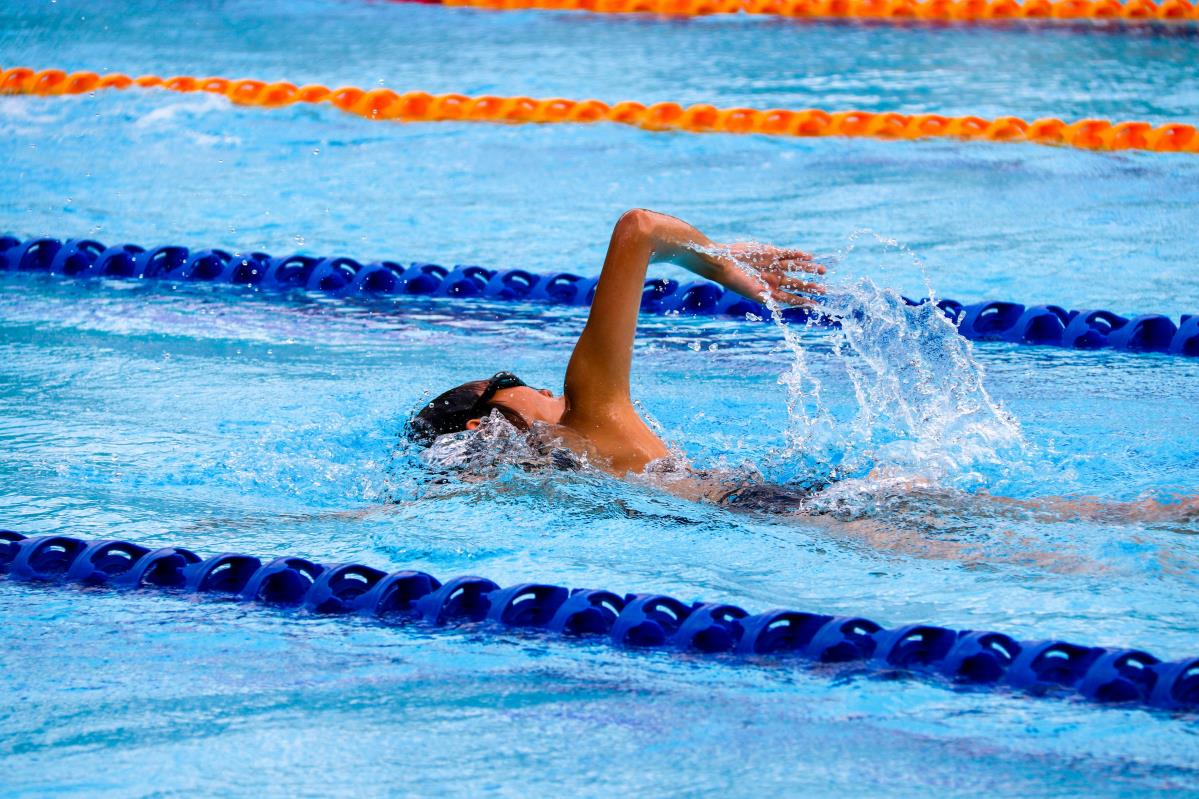
Photo by Pixabay
Get your FREE Guide to Swimming Technique and Training Sessions
Cyclists, Rowing Is Your Secret Weapon
Cyclists benefit from rowing because it complements cycling by strengthening the upper body and core while also boosting cardiovascular endurance. Cycling primarily uses the legs, and rowing provides a perfect counterbalance, engaging the entire body.
- Muscles Targeted: Rowing activates muscles in the legs (quadriceps, hamstrings, calves), as well as the back, core, shoulders, and arms.
- Why It’s Effective: Rowing helps cyclists develop a strong core, which is crucial for maintaining proper posture during long rides and enhancing pedal stroke efficiency. Additionally, rowing increases stamina, which is helpful for endurance rides.
Suggested Rowing Workout for Cyclists:
- Warm-up: 5-10 minutes of easy rowing at a low intensity.
- Main Set: 2 x 1,000 meters at a fast pace, with 2-minute rest between sets.
- Cool Down: 5 minutes of easy rowing.
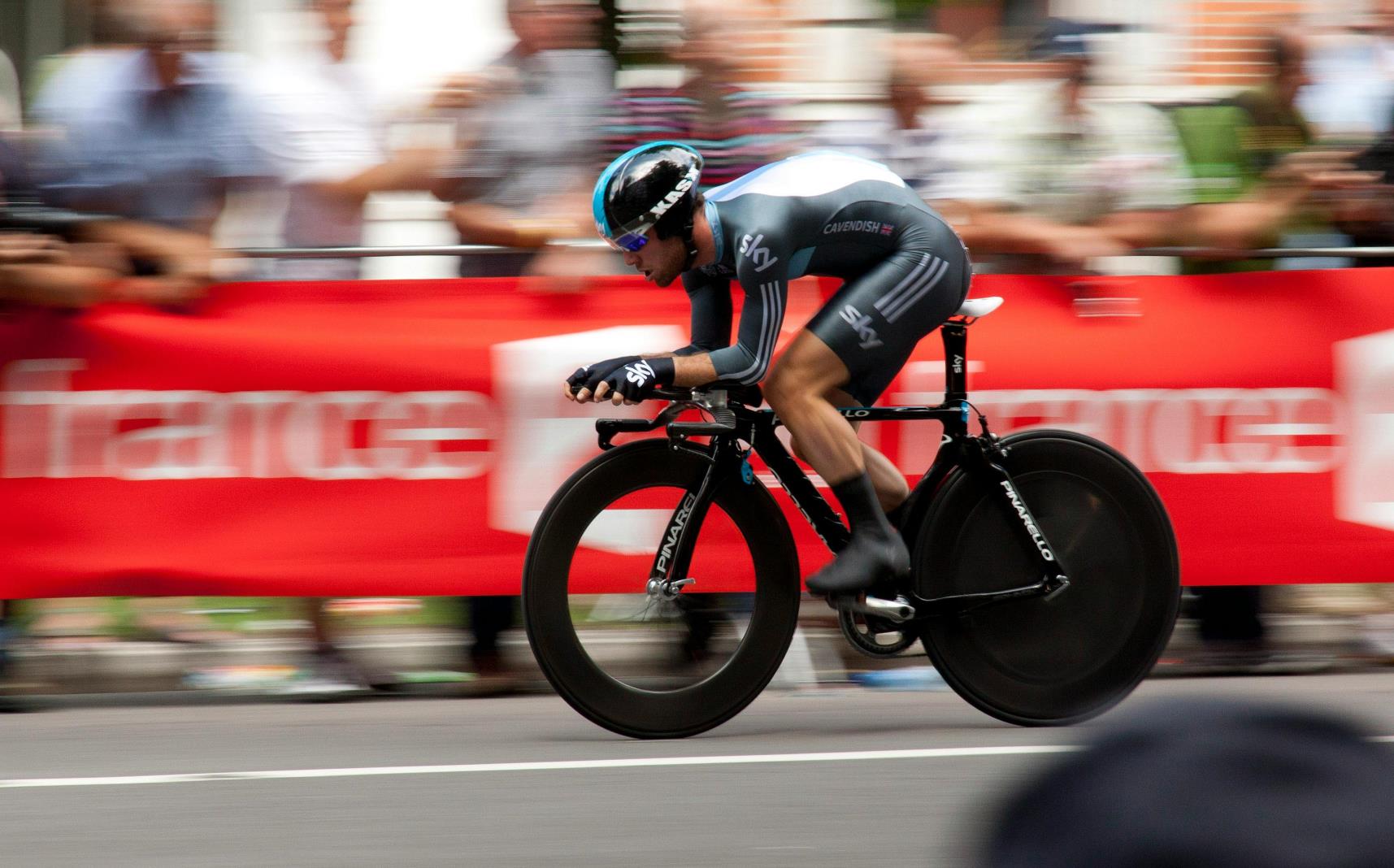
Photo by Chris Peeters
Get your FREE 31 Structured Training Session for Indoor Cycling
For Runners, Rowing Is the Ultimate Cross-Training
Runners, particularly those who log a lot of miles, can benefit immensely from indoor rowing as it offers an excellent way to maintain cardiovascular conditioning without adding extra impact to the joints. Rowing can help strengthen the muscles that runners often overlook, such as the back, arms, and core.
- Muscles Targeted: The rowing stroke targets key muscle groups, including the quadriceps, hamstrings, glutes, lower back, and core, as well as the upper body (biceps, triceps, shoulders).
- Why It’s Effective: Running predominantly engages the lower body, and indoor rowing helps counteract muscle imbalances by strengthening the upper body and core. It also enhances endurance, as rowing helps improve aerobic capacity, which directly benefits your running stamina.
Suggested Rowing Workout for Runners:
- Warm-up: 5-10 minutes of easy rowing at a low intensity.
- Main Set: 5 x 400 meters at a moderate pace, with 1-minute rest between sets.
- Cool Down: 5 minutes of easy rowing.
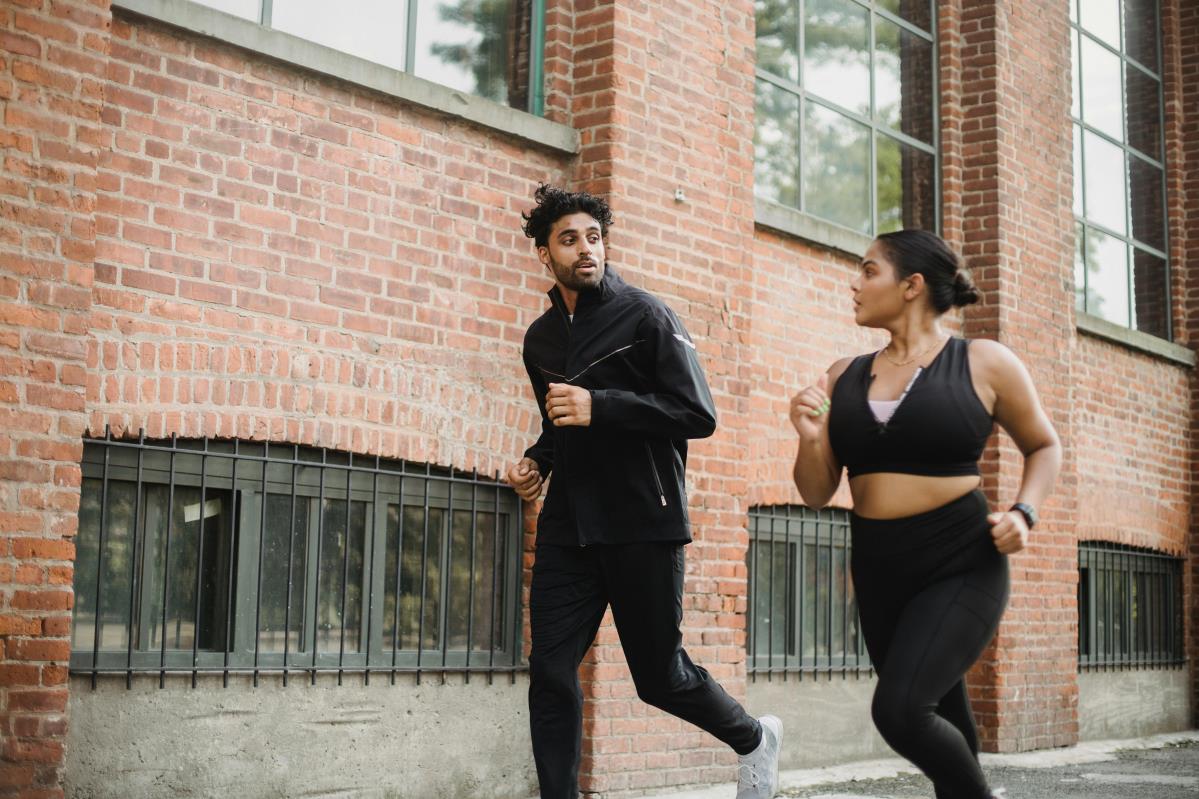
Photo by Ketut Subiyanto
Get your FREE Guide to Running Technique
How to Row Safely: Tips for Injury-Free Workouts
Rowing is an incredible full-body workout, but like any exercise, proper form and precautions are key to staying safe and maximizing benefits. Whether you’re a beginner or an experienced rower, here’s how to keep your sessions safe and effective.
1. Warm Up First
Always begin with a proper dynamic warm-up to prepare your body for the workout. Spend the first few minutes doing a dynamic warm-up off or on the rower then 5 minutes doing light rowing at an easy pace.
An example of a dynamic warm-up on the rower is arms only, rock over, quarter slide, half slide, three quarter slide then full slide. The video below from British Rowing shows how to do a rowing technical warm-up:
British Rowing Technical Warm-up
Get your 5 Week Rowing Fitness Training Plan
2. Master the Basics of Rowing Form
Good form is crucial to avoiding strain or injury. Technique on an indoor rowing machine can be divided into three parts: the catch, the drive and the recovery. Here are the phases of indoor rowing in detail:
The Catch
- Arms are straight; head is neutral; shoulders are level and not hunched.
- Upper body is leaning forward from the hips with the shoulders in front of the hips.
- Shins are vertical, or as close to vertical as is comfortable for you. Shins should not move beyond perpendicular.
- Heels may lift as needed.
The Drive
- Start the drive by pressing with your legs and then swing the back through the vertical position before finally adding the arm pull.
- Hands move in a straight line to and from the flywheel.
- Shoulders remain low and relaxed.
The Finish
- Upper body is leaning back slightly, using good support from the core muscles.
- Legs are extended and handle is held lightly below your ribs.
- Shoulders should be low with wrists and grip relaxed. Wrists should be flat.
The Recovery
- Extend your arms until they straighten before leaning from the hips towards the flywheel.
- Once your hands have cleared your knees, allow your knees to bend and gradually slide the seat forward on the monorail.
- For your next stroke, return to the catch position with shoulders relaxed and shins vertical.
This video from Concept2 rowing will help you with the basics of the stroke:
Concept2 Rowing: Learn How to Row
Get your 5 Week Rwoing Fitness Training Plan
3. Adjust the Rowing Machine Properly
Before you start, make sure the machine is set up correctly:
- Foot Straps: Your feet should be securely strapped in, with the strap sitting across the widest part of your foot.
- Damper Setting (for air rowers): Avoid starting with the resistance too high. A setting between 3 and 5 is ideal for most beginners.
- Seat Position: Ensure you’re seated comfortably, with enough room to fully extend your legs during the drive.
4. Listen to Your Body
Pay attention to how you’re feeling throughout your workout. If you experience sharp pain or discomfort, stop and reassess your form. Rowing should challenge you, but it should never hurt. Don’t push through fatigue at the expense of good technique—it’s better to row shorter sessions with proper form than risk injury.
5. Avoid Common Mistakes
- Overarching Your Back: Keep your spine neutral and engage your core to prevent strain.
- Over gripping the Handle: A loose, relaxed grip is sufficient; squeezing too hard can lead to hand or wrist pain.
- Rushing the Recovery: Take your time on the return phase to maintain control and proper rhythm.
6. Warm Down and Stretch
After rowing, warm down with 5-10 minutes of light rowing at an easy pace. Follow up with static stretches focusing on your hamstrings, glutes, hips, shoulders, and back. Stretching helps reduce soreness and improves flexibility over time.
How to Choose the Perfect Rowing Machine for Your Home
When choosing a rowing machine, it’s helpful to understand the main types of resistance systems: air, water, magnetic, and hydraulic.
Air rowers use a flywheel to create resistance that adjusts to your effort, making them ideal for intense workouts; however, they can be noisy.
Water rowers replicate the feel of real rowing with smooth, natural resistance created by water in a tank—plus, they’re quiet and visually appealing.
Magnetic rowers use magnets to offer adjustable and silent resistance, making them great for home use, especially in shared spaces.
Lastly, hydraulic rowers are compact and affordable but may lack the fluid motion of other options. Each type has its pros and cons, so the best choice depends on your goals, space, and budget.
Ready to bring the rowing experience to your living room? Here’s the lowdown on some of the best rowing machines out there, so you can find one that fits your budget and goals.
1. WaterRower Natural Rowing Machine S4
The WaterRower Natural Rowing Machine offers a smooth, authentic rowing experience with water resistance, providing both a challenging workout and a visually appealing design. Its natural wood frame and quiet operation make it a stylish and effective option for home fitness enthusiasts.
- Type: Water Rower
- Price Range: $$$
- Pros: Its water resistance gives you a smooth, realistic rowing feel. The solid wood frame looks amazing, and the S4 monitor tracks all the stats you need.
- Why You’ll Love It: It’s quiet, sleek, and feels like the real thing.
- Cons: It’s pricey and needs a bit of water maintenance.
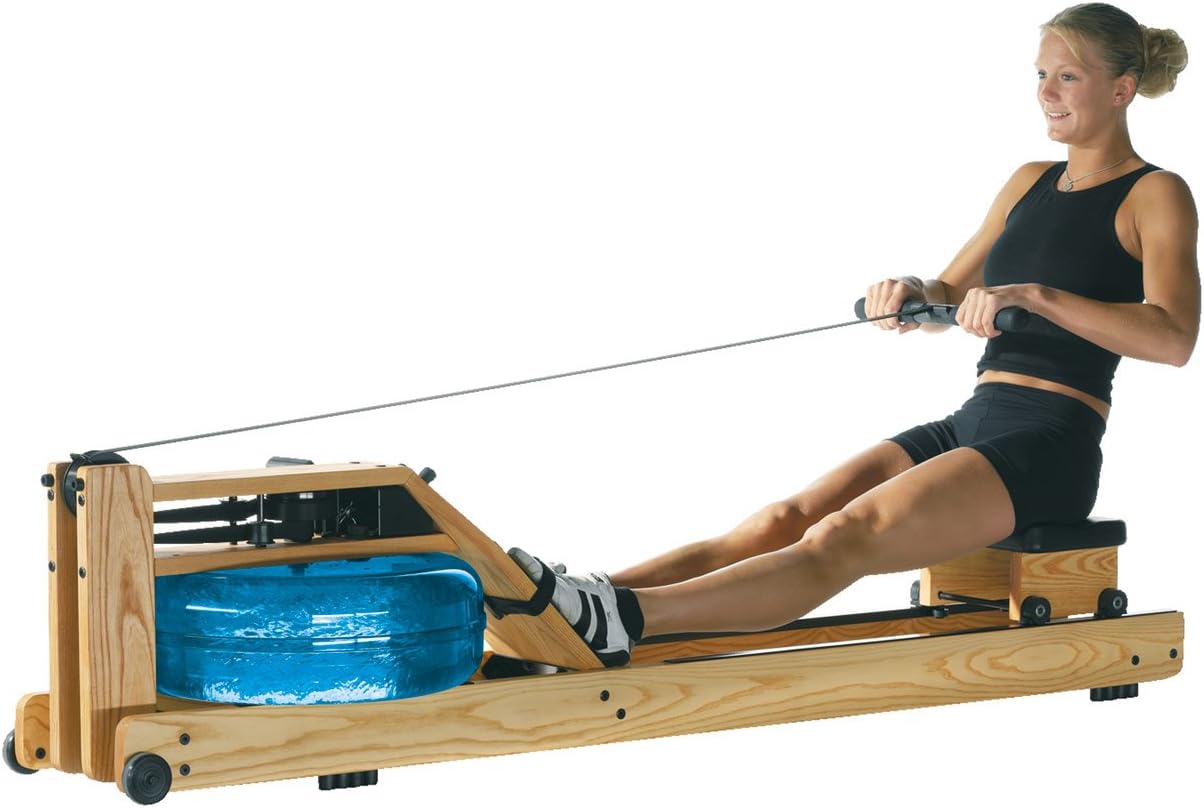
2. Hydrow Connected Rowing Machine
The Hydrow Rowing Machine combines cutting-edge technology with a smooth, immersive rowing experience. Featuring live and on-demand classes, it offers a dynamic, interactive workout from the comfort of your home.
- Type: Electromagnetic
- Price Range: $$$$
- Pros: This is the Peloton of rowing. You get live and on-demand classes on a stunning HD touchscreen, plus electromagnetic resistance for a super-smooth ride.
- Why You’ll Love It: The classes keep you motivated, and it’s whisper-quiet.
- Cons: It’s expensive, and the subscription adds to the cost.

3. Crivit Lidl Rower
This rower from Lidl is great value for money and often sells out when offered on their website. It looks a lot like the Concept2 rower but without the full functioning display. It does have a tablet holder so you can follow along to rowing videos.
- Type: Air Rower
- Price Range: $$
- Pros: It looks and feels like the Concept2 rower but without the build quality. It can fold to take up less room.
- Why You’ll Love It: It’s easy on the wallet and doesn’t take up much space.
- Cons: It’s not the most durable and lacks advanced features. The display is functional but does not offer connectivity.

4. Concept2 Rower
The Concept2 Rowing Machine is a highly durable, performance-driven rower known for its air resistance system. It’s a favourite among athletes for its reliable performance and precise performance tracking.
- Type: Air Rower
- Price Range: $$$$
- Pros: The gold standard for rowing machines, it’s durable, reliable, and comes with a PM5 monitor for detailed performance tracking with Bluetooth and ANT+ connectivity to connect to your heart rate monitor and App.
- Why You’ll Love It: It’s a favourite in gyms for a reason—it just works.
- Cons: It’s louder than other options and has a more utilitarian look
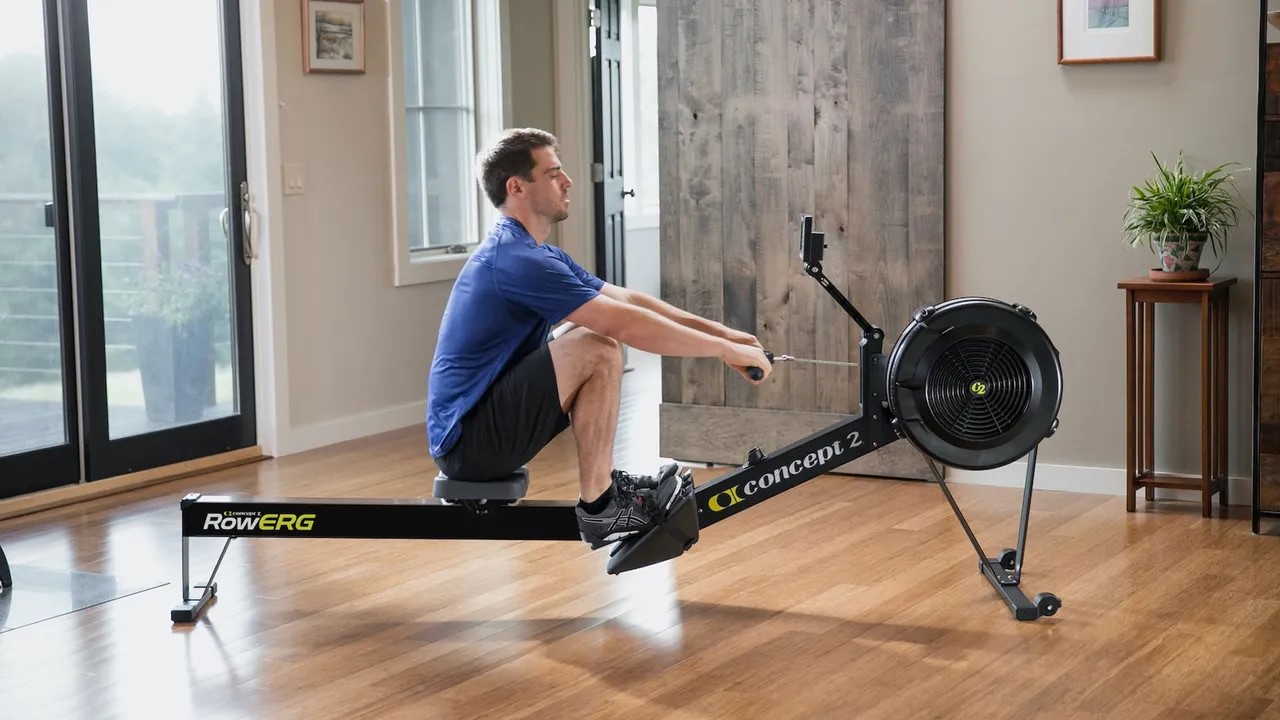
5. Sunny Health & Fitness Rowing Machine SF-RW5622
The Sunny Health & Fitness SF-RW5622 Rowing Machine offers a smooth, quiet magnetic resistance workout at an affordable price, making it a great option for beginners and home use.
- Type: Magnetic
- Price Range: $
- Pros: Affordable and quiet, with magnetic resistance and adjustable tension levels. It has a phone/tablet holder. It folds for storage.
- Wy you'll love it: It’s a solid middle-ground option for beginners.
- Cons: Taller users might find it less comfortable, and it’s light on advanced features. It has a basic monitor with no connectivity.
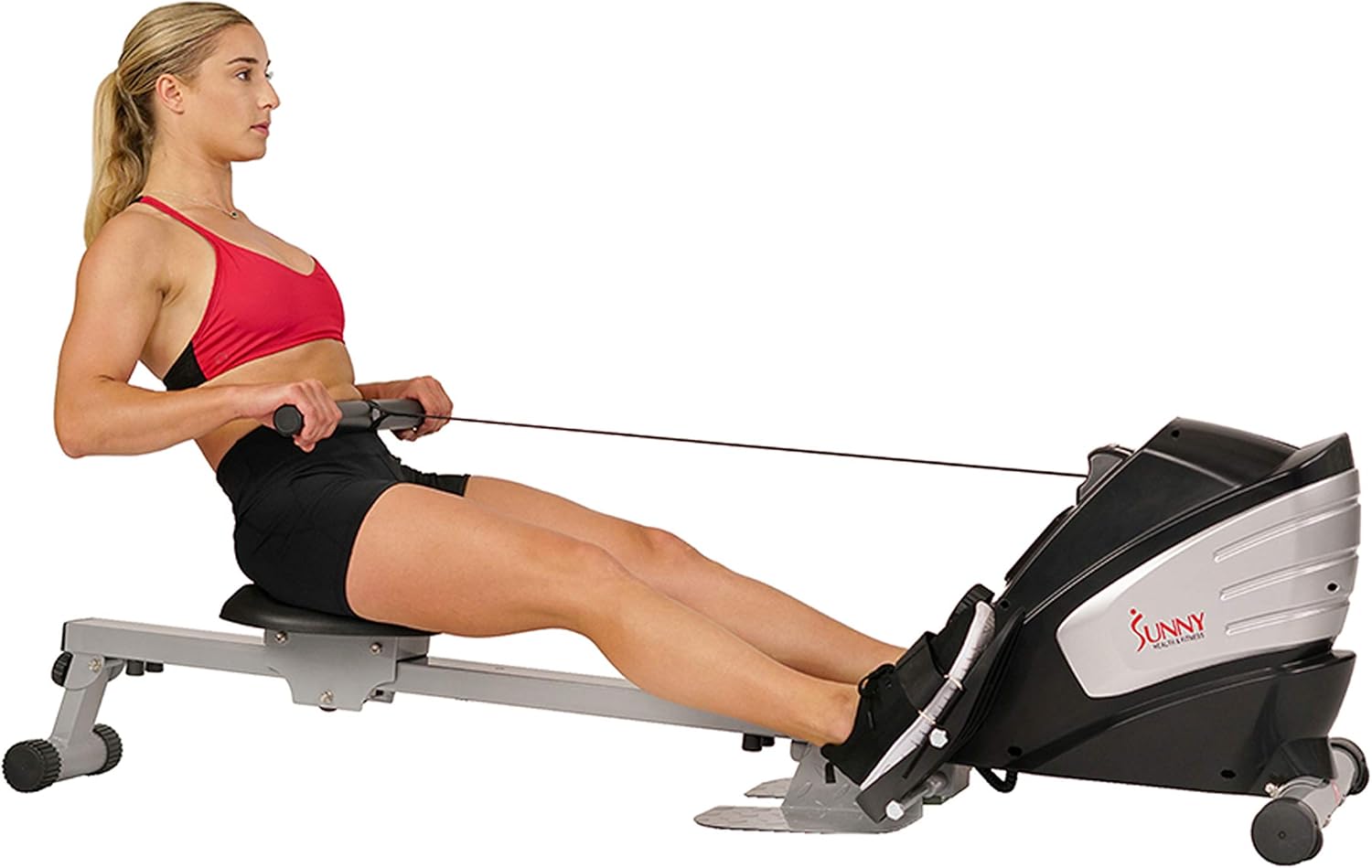
Conclusion: Why add Indoor Rowing to your Training Programme
Indoor rowing is an incredibly effective cross-training tool for triathletes, swimmers, cyclists, and runners. It strengthens the key muscles that your primary sport might overlook, improves cardiovascular endurance, and gives you a low-impact option for high-intensity workouts. By adding rowing into your routine, you’ll be strengthening your entire body and enhancing your performance, all while preventing injuries and muscle imbalances.
Rowing is low impact to is an ideal cross training option when you want to give your knees a rest!
When choosing a rowing machine, think about your budget, space at home, and any specific features you want, like a connected experience or a smooth rowing motion.
Whether you opt for a budget-friendly option or a high-tech rowing machine, the most important thing is to get started and make rowing a regular part of your cross-training.
Karen Parnell is a Level 3 British Triathlon and IRONMAN Certified Coach, 8020 Endurance Certified Coach, WOWSA Level 3 open water swimming coach and NASM Personal Trainer and Sports Technology Writer.
Karen has a post graduate MSc in Sports Performance Coaching from the University of Stirling.
Need a training plan? I have plans on TrainingPeaks and FinalSurge:
I also coach a very small number of athletes one to one for all triathlon and multi-sport distances, open water swimming events and running races, email me for details and availability. Karen.parnell@chilitri.com
Learn more about strength training for triathletes in our free e-book
Get your 5 Week Rwoing Fitness Training Plan
Indoor Rowing FAQ: Your Questions Answered
1. What is indoor rowing?
Indoor rowing is a low-impact, full-body workout that uses a rowing machine to simulate the motion of rowing a boat. It’s perfect for building strength, improving cardiovascular endurance, and burning calories, all while being easy on the joints.
2. What muscles does rowing work?
Rowing works about 86% of your muscles. Here’s the breakdown:
- Legs: Your quads, hamstrings, and glutes do most of the work during the drive phase.
- Core: Your abs and lower back stabilize your body and transfer power.
- Upper body: Your lats, traps, shoulders, biceps, and forearms get a great workout, especially during the pull.
3. Is rowing good for beginners?
Absolutely - Rowing is low-impact and easy to adjust to your fitness level. Start slow to learn proper form, and gradually increase intensity and duration as you build confidence.
4. Can rowing help me lose weight?
Yes - Rowing is an excellent calorie burner, with a 30-minute moderate session burning around 200-300 calories, depending on your weight and effort. Paired with a balanced diet, it’s a great tool for weight loss.
5. How do I use a rowing machine correctly?
Here are the key steps:
- The Catch: Sit tall, knees bent, arms straight, and hold the handle with a relaxed grip.
- The Drive: Push through your legs first, then engage your core and pull the handle to your chest.
- The Finish: Sit upright, legs extended, and the handle close to your chest.
- The Recovery: Reverse the motion: arms out, then hinge forward, and finally bend your knees to return to the start. Focus on smooth, controlled movements to avoid injury.
6. How long should I row for?
It depends on your fitness goals but here's a rough guide:
- Beginners: Start with 10-15 minutes at an easy pace.
- Cardio workouts: Aim for 20-30 minutes at a steady intensity.
- HIIT: Short bursts of intense rowing (e.g., 20 seconds hard, 40 seconds easy) for 15-20 minutes.
7. Is rowing hard on the knees or back?
No—as long as you maintain proper form. Rowing is low-impact, making it gentle on your knees. To avoid back strain, focus on engaging your core and keeping a neutral spine.
8. Can I build muscle with rowing?
Rowing is both a strength and cardio workout. While it won’t bulk you up like weightlifting, it builds lean muscle in your legs, core, and upper body.
9. How often should I row?
For general fitness, aim for 3-4 sessions per week. If you’re cross-training for a sport, adjust based on your overall training schedule and recovery needs.
10. What type of rowing machine is best?
The best rowing machine depends on your goals and budget. Here are the main types:
- Water rowers: Smooth, realistic resistance and quiet operation (e.g., WaterRower Natural).
- Air rowers: Adjustable resistance based on effort, great for intense workouts (e.g., Concept2 Rower).
- Magnetic rowers: Quiet and affordable, with adjustable resistance (e.g., Sunny Health & Fitness SF-RW5622).
- Hydraulic rowers: Compact and budget-friendly but less smooth.
11. Do I need to stretch after rowing?
Yes- Stretching helps prevent tightness and improves recovery. Focus on your hamstrings, quads, glutes, back, and shoulders after a session.
12. Can I row every day?
You can, but listen to your body. If you’re feeling sore or fatigued, take a rest day or opt for a lighter session. Mixing in other forms of exercise can also help prevent burnout.
13. Is indoor rowing noisy?
It depends on the machine:
- Water and magnetic rowers are the quietest.
- Air rowers can be louder, especially at higher intensities. Choose based on your environment and noise tolerance.
14. How do I maintain a rowing machine?
- Water rowers: Change the water periodically and clean the tank.
- Air and magnetic rowers: Wipe down the rail, seat, and handle after use, and check the chain tension and monitor battery.
- All rowers: Keep them clean and follow the manufacturer’s maintenance guidelines.
15. Can I use rowing as my main workout?
Yes - Rowing can be a stand-alone workout or part of a larger routine. It’s versatile, effective, and fun—whether you’re training for fitness, weight loss, or performance.
16. What’s the best rowing machine for small spaces?
Compact rowers like the Crivit Lidl Rower or foldable models (e.g., Concept2) are great for tight spaces. Check dimensions and storage options before buying.
Ready to Row? Indoor rowing is one of the best ways to stay fit, whether you’re a seasoned athlete or just starting out. With proper form and a good routine, you’ll see results in no time. Have fun and keep rowing!
This website uses affiliate links which may earn a commission at no additional cost to you. As an Amazon Associate I earn from qualifying purchases. which may cover part of a cup of coffee for me to fuel my training.
